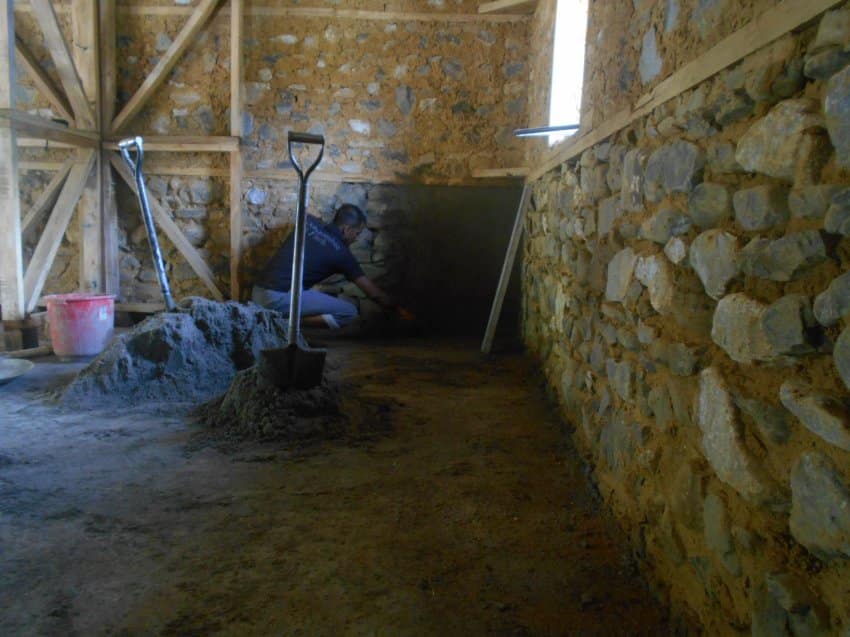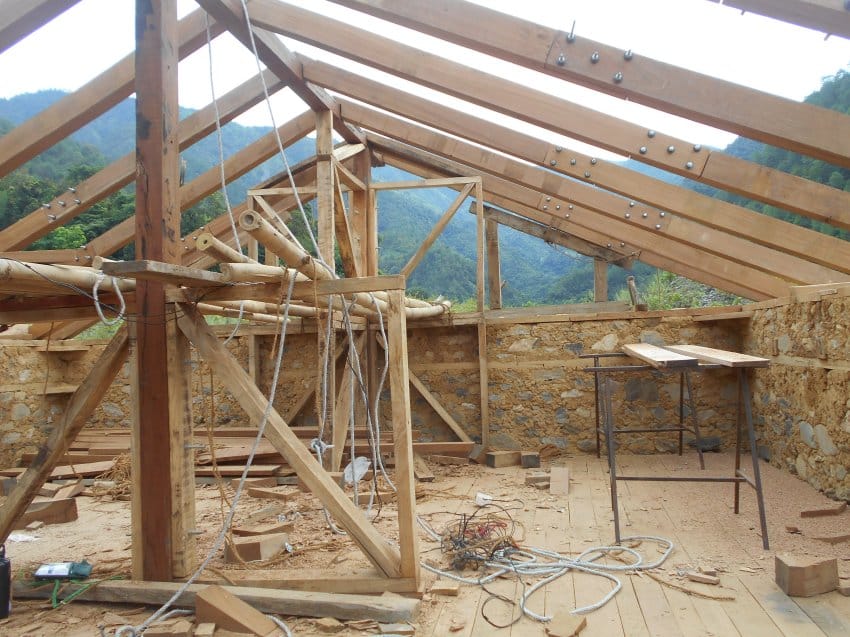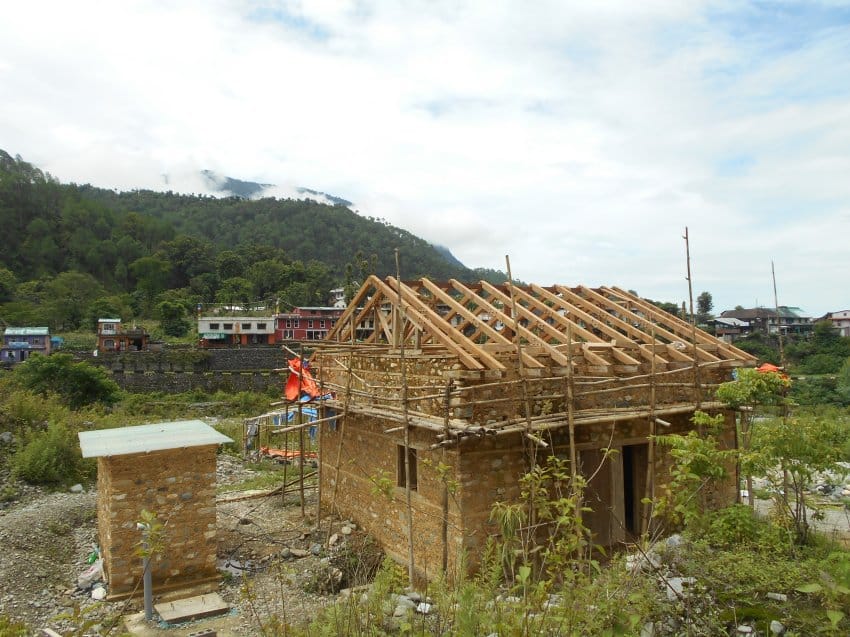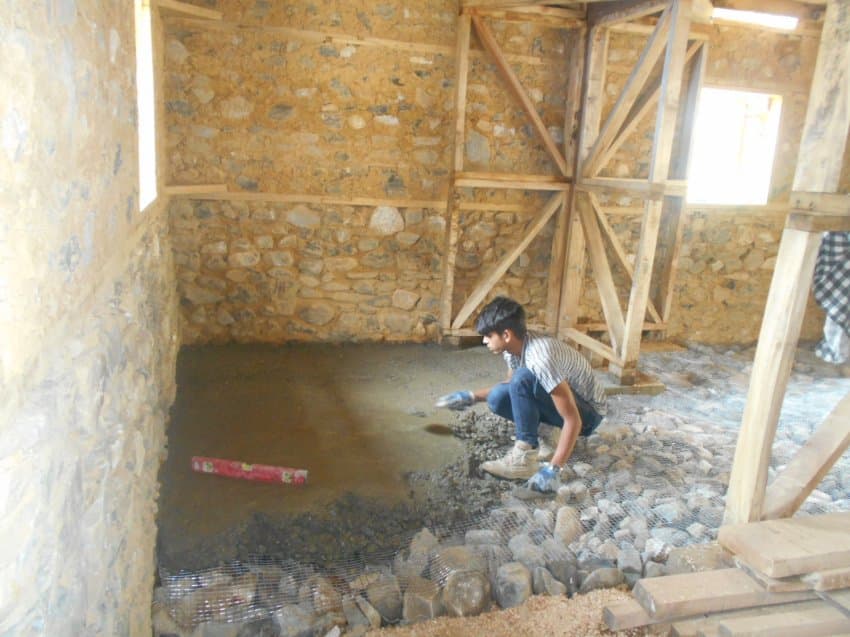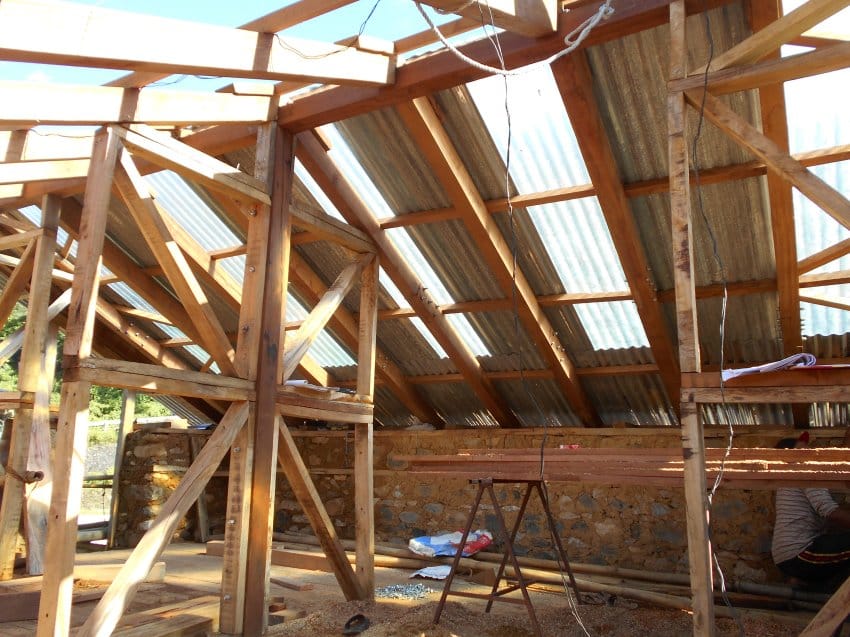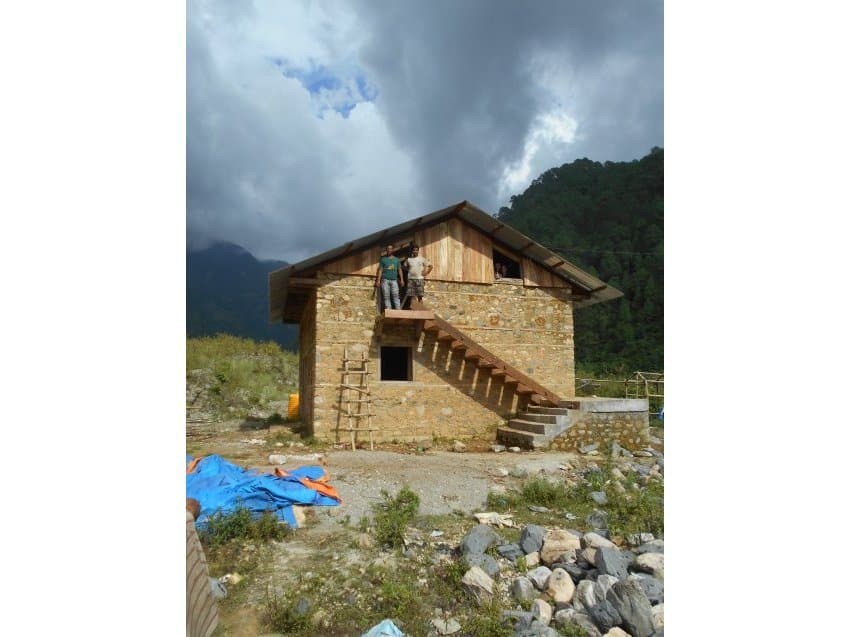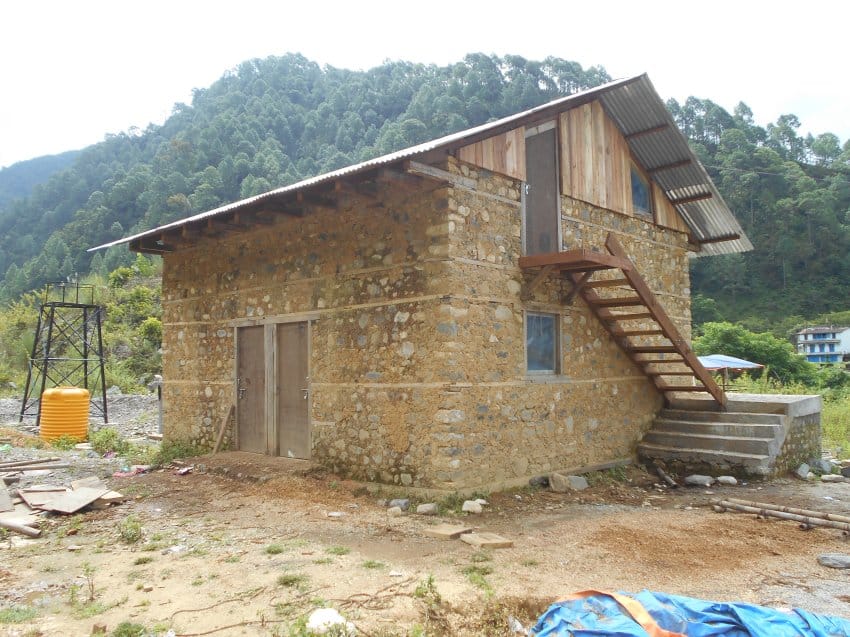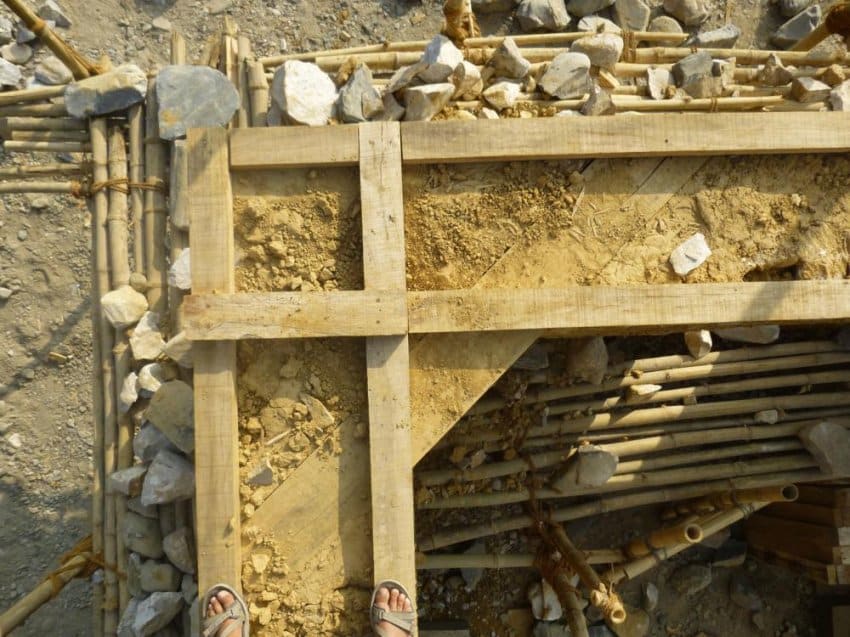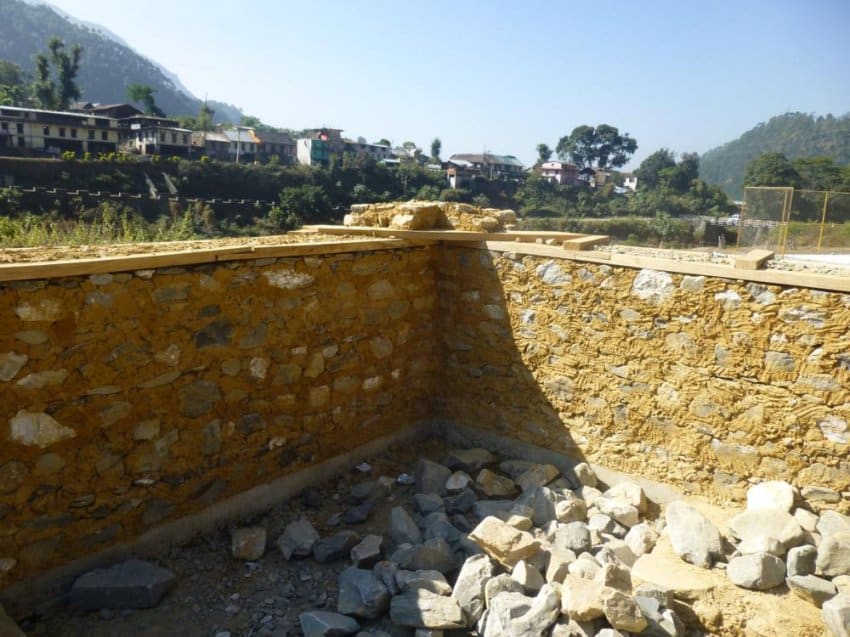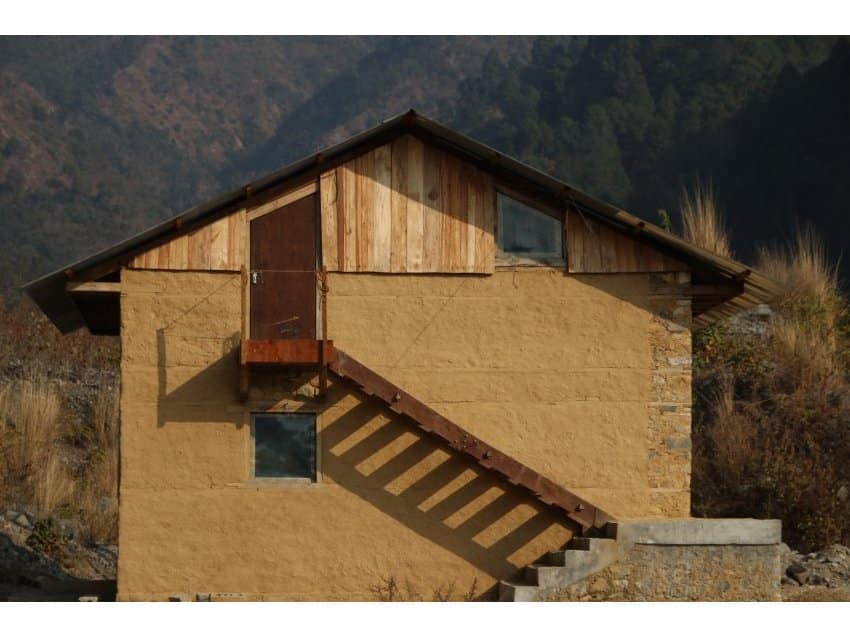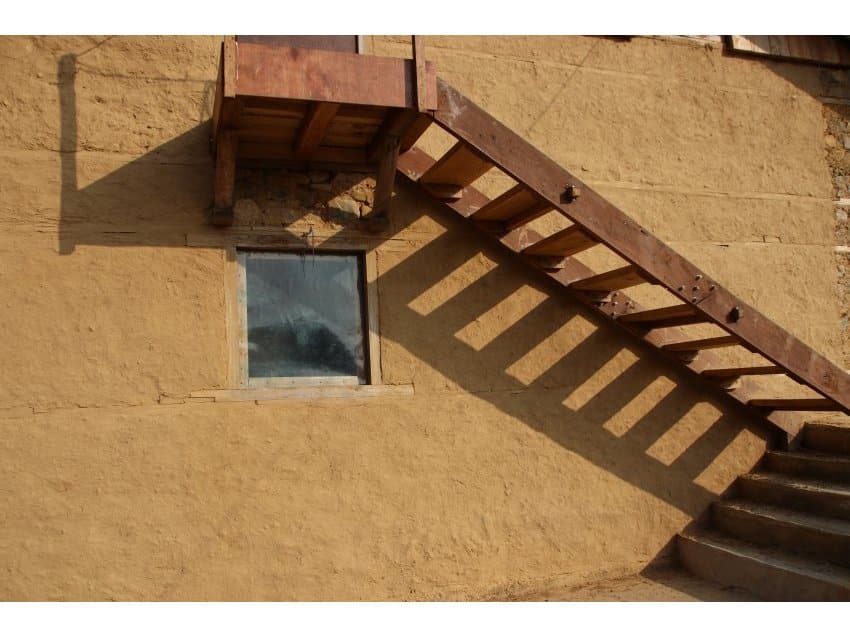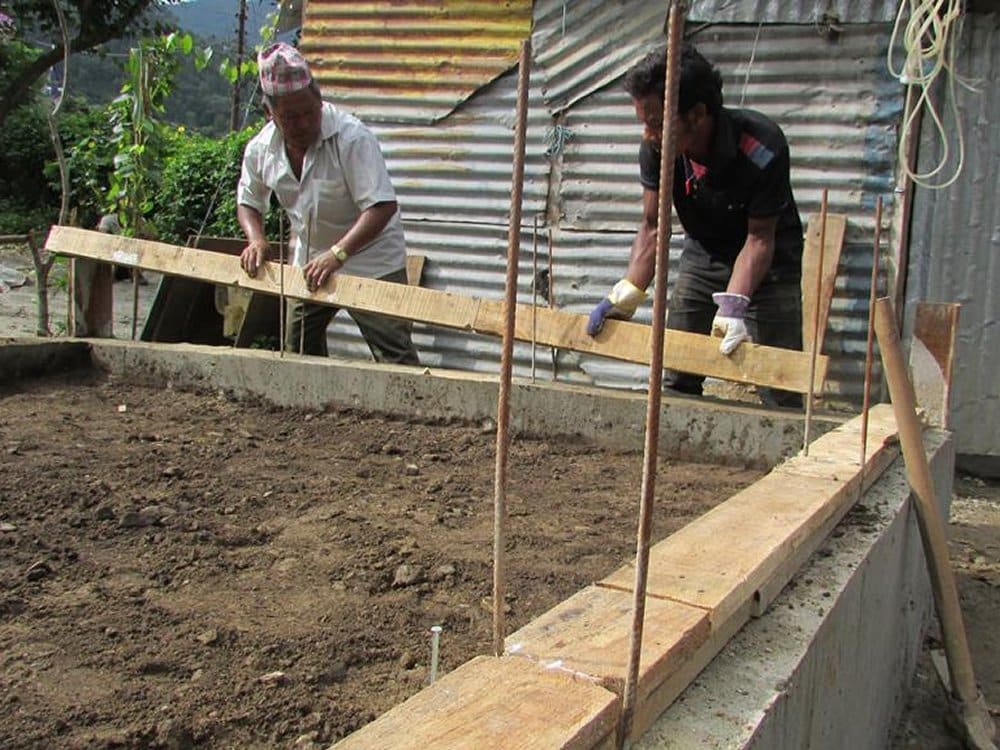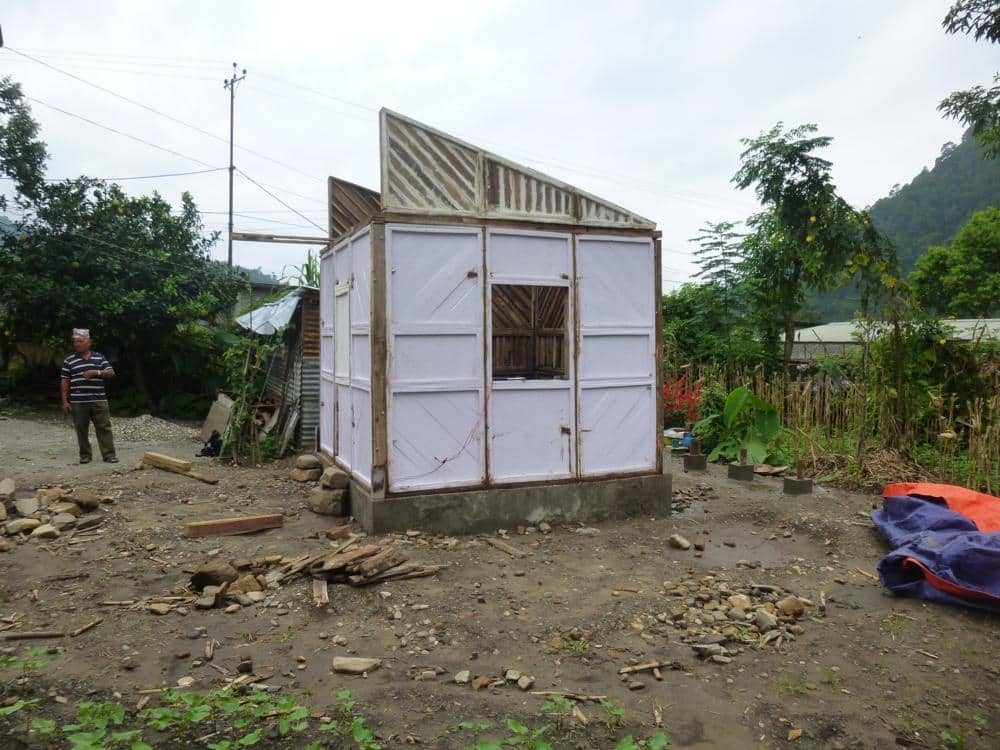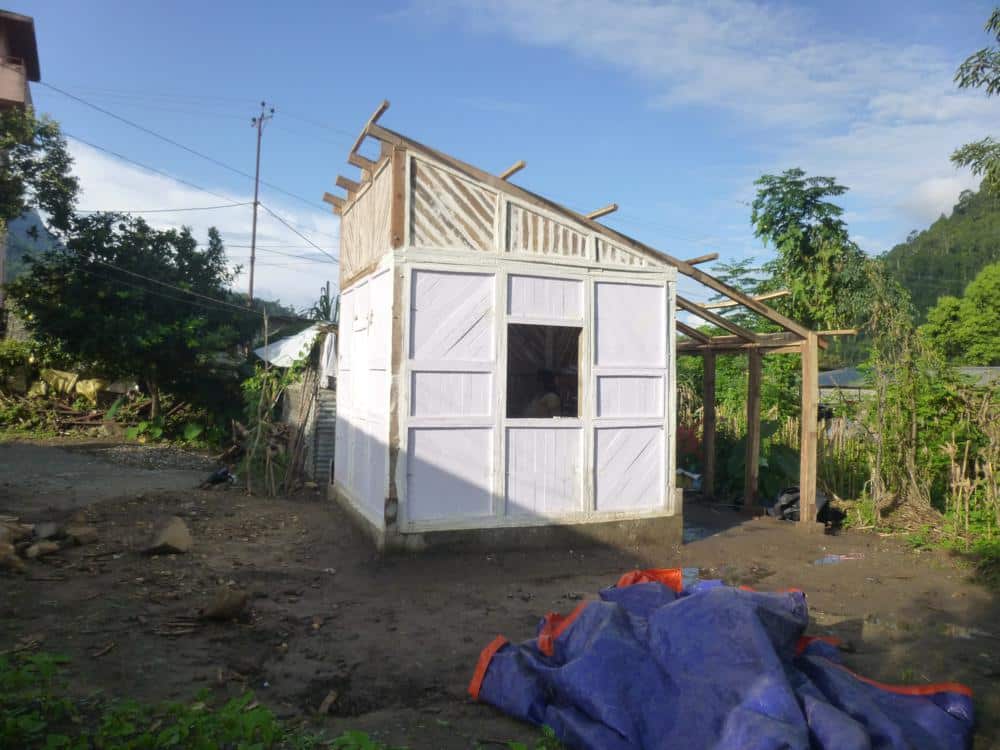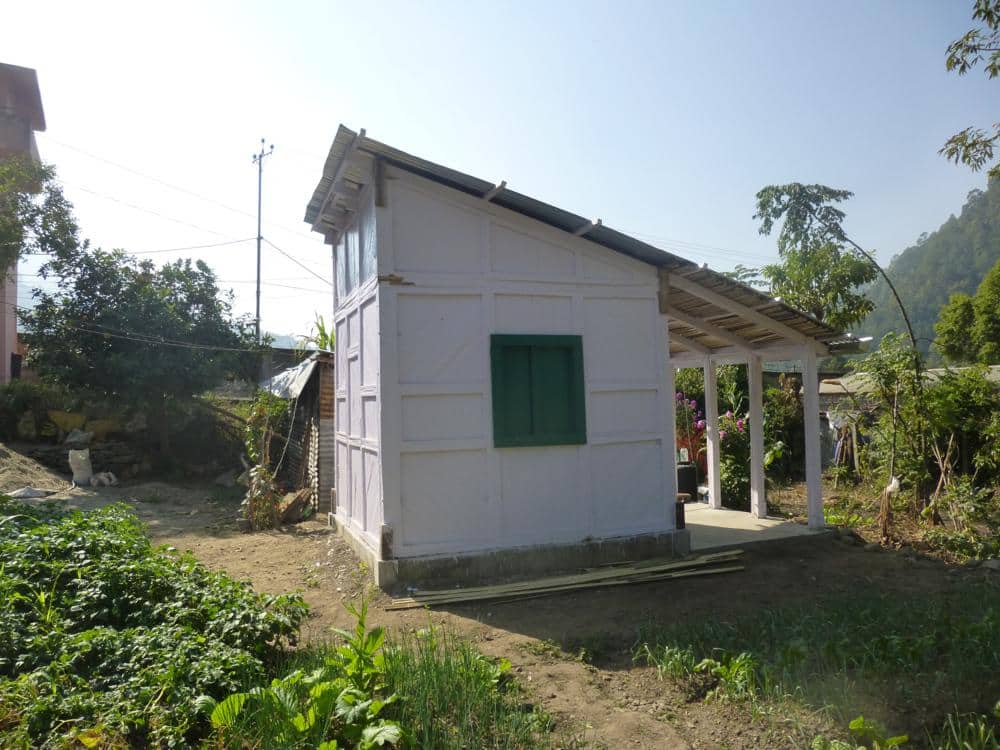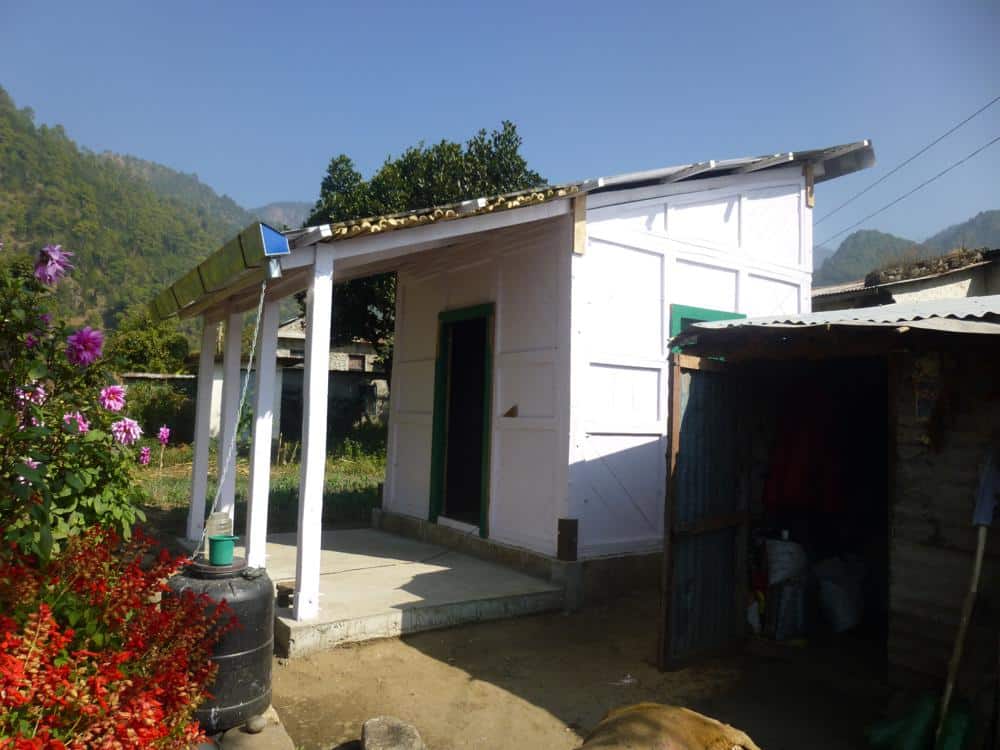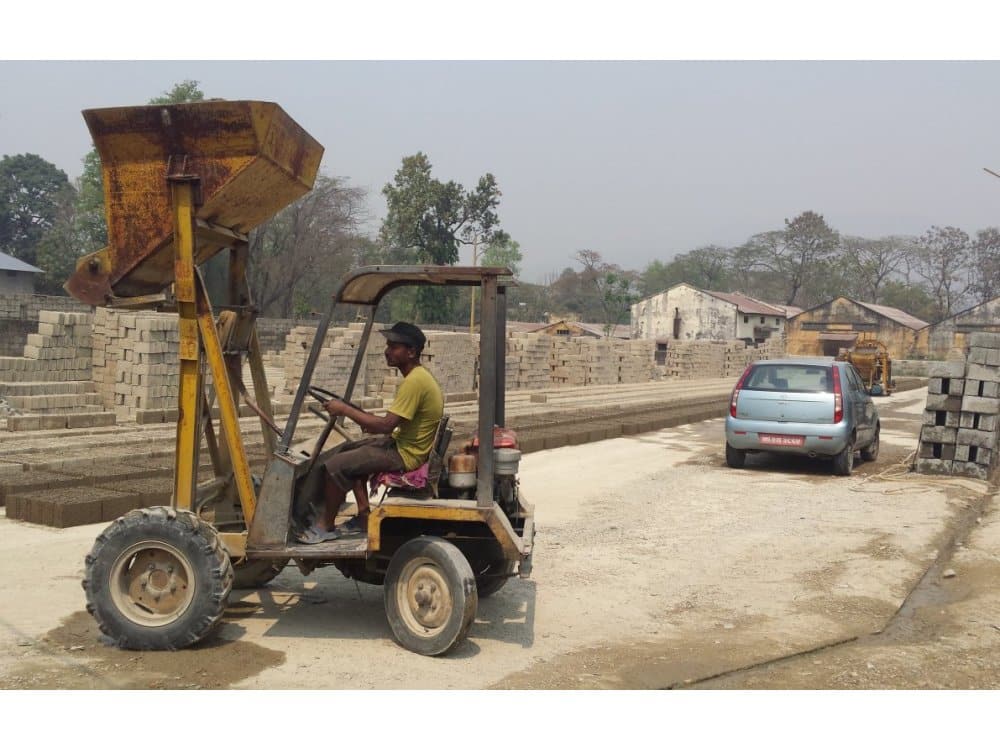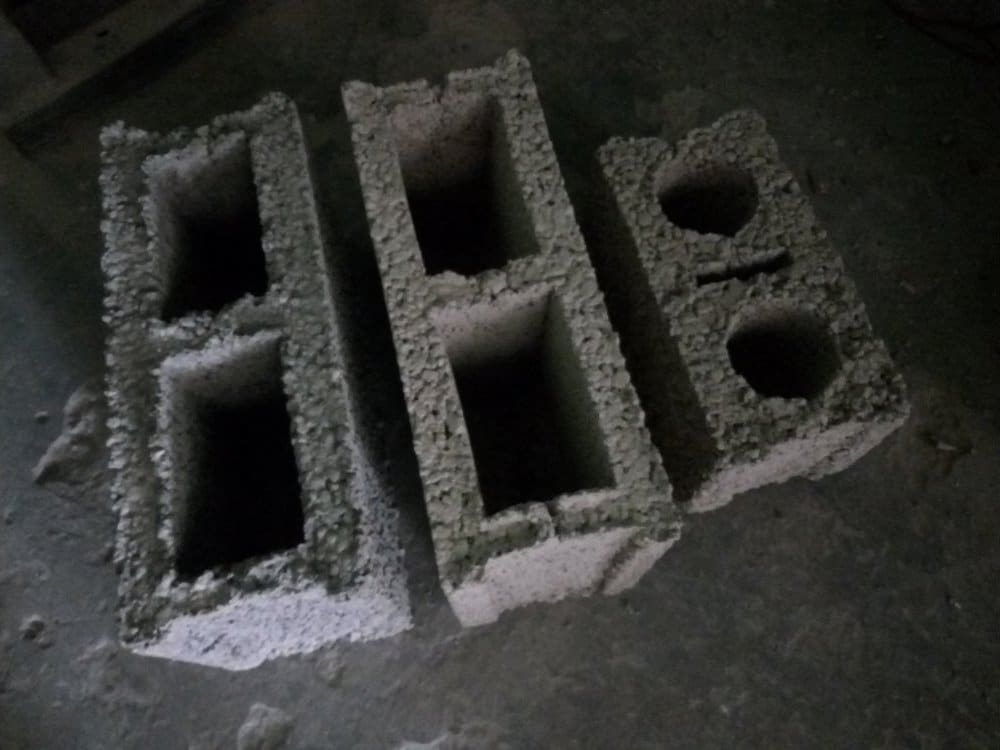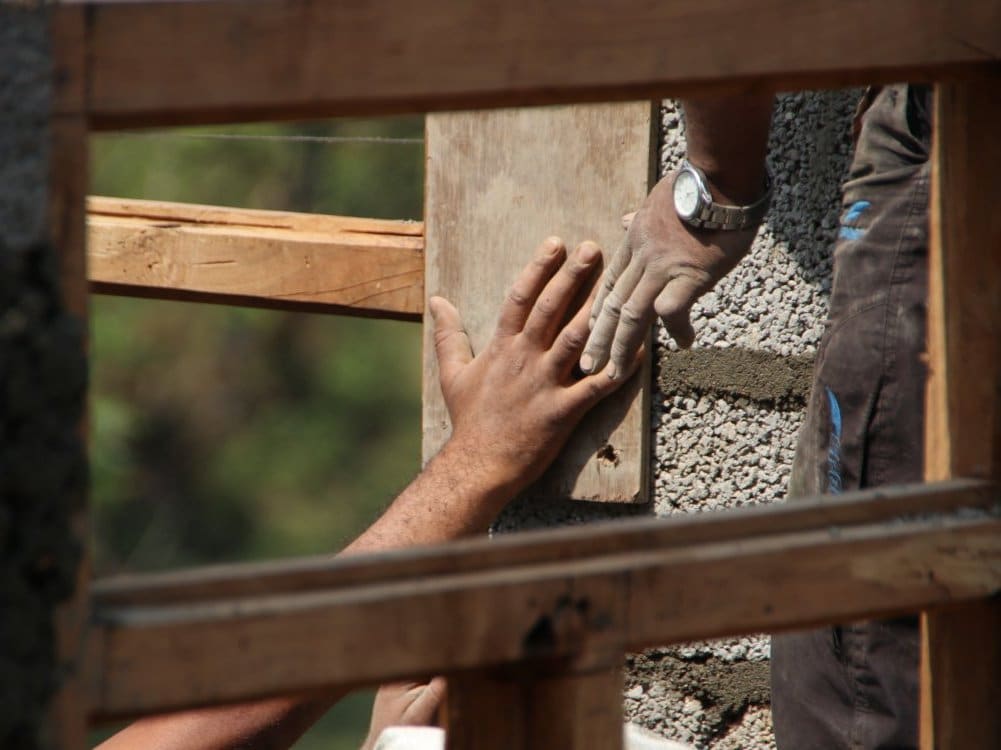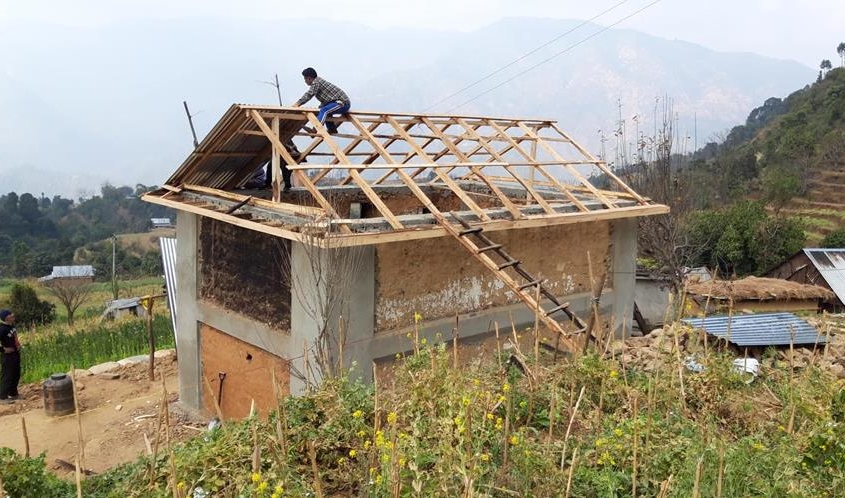Seismic-Resistance
During the reconnaissance trip after the earthquake in July 2015, more than fifty houses were visited in different parts of Bhimphedi to study the relationship between their damage degree and their construction typology. These studies, along with the general proposal for action, were reflected in the Identification Trip Report del Viatge. The program was structured in giving: social, economic and technical support.
The latter provided a number of technical improvements to traditional architecture, such as the need to add diagonal reinforcements or to bind the walls horizontally and vertically. Later, these improvements were tested during the prototypes’ construction and were finally applied and perfected in the houses’ construction.
Stone and mud
This traditional technique was the first to be selected to study and improve its characteristics.
Wood
The second chosen technique were the cheap wood planks, commonly used for formwork, in order to build demountable and improved emergency shelters.
Confined block
In third place, it was decided to test the confined block technique, as this material is often used in the village, but incorrectly.
Retrofitting
In parallel with the new construction prototypes, a couple of retrofitting prototypes were also made.
Awarness
One of the most important purposes of Awasuka is to spread knowledge and awareness about safe houses.

